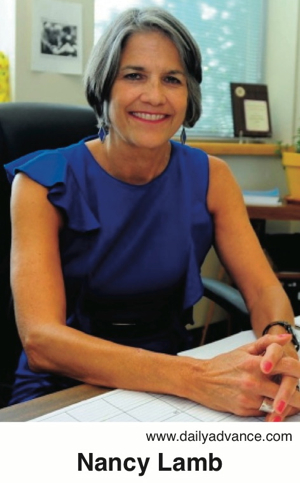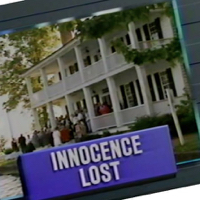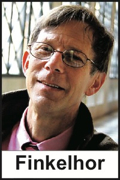Rascals case in brief
In the beginning, in 1989, more than 90 children at the Little Rascals Day Care Center in Edenton, North Carolina, accused a total of 20 adults with 429 instances of sexual abuse over a three-year period. It may have all begun with one parent’s complaint about punishment given her child.
Among the alleged perpetrators: the sheriff and mayor. But prosecutors would charge only Robin Byrum, Darlene Harris, Elizabeth “Betsy” Kelly, Robert “Bob” Kelly, Willard Scott Privott, Shelley Stone and Dawn Wilson – the Edenton 7.
Along with sodomy and beatings, allegations included a baby killed with a handgun, a child being hung upside down from a tree and being set on fire and countless other fantastic incidents involving spaceships, hot air balloons, pirate ships and trained sharks.
By the time prosecutors dropped the last charges in 1997, Little Rascals had become North Carolina’s longest and most costly criminal trial. Prosecutors kept defendants jailed in hopes at least one would turn against their supposed co-conspirators. Remarkably, none did. Another shameful record: Five defendants had to wait longer to face their accusers in court than anyone else in North Carolina history.
Between 1991 and 1997, Ofra Bikel produced three extraordinary episodes on the Little Rascals case for the PBS series “Frontline.” Although “Innocence Lost” did not deter prosecutors, it exposed their tactics and fostered nationwide skepticism and dismay.
With each passing year, the absurdity of the Little Rascals charges has become more obvious. But no admission of error has ever come from prosecutors, police, interviewers or parents. This site is devoted to the issues raised by this case.
On Facebook
Click for earlier Facebook posts archived on this site
Click to go to
Today’s random selection from the Little Rascals Day Care archives….
Click for earlier Facebook posts archived on this site
Click to go to
Today’s random selection from the Little Rascals Day Care archives….
The unbearable emptiness of ‘n=’
May 24, 2013
“The research described is a study of a clinical sample of 72 women who allegedly sexually abused 332 children. The Sample is examined from a variety of perspectives, including whether the abuse was intrafamilial (n = 33), extrafamilial (n = 18), or both (n = 21); and whether the abuse involved multiple intrafamilial offenders (n = 33), a solo intrafamilial offender (n = 17), multiple extrafamilial offenders (n = 16), or solo extrafamilial offenders (n = 6). Social situational factors and individual deficits – mental illness (n = 23), mental retardation (n = 16), substance abuse (n = 37), and other maltreatment of their children (n = 61) that might lead women to sexually abuse children – are examined. Case outcomes, including the number of confessions (n = 49), criminal prosecution (n = 3), and protection of victims (n = 44) are described.”
– From “A Clinical Sample of Women Who Have Sexually Abused Children” (abstract) by Kathleen Coulborn Faller in the Journal of Child Sexual Abuse (Vol. 4, Issue 3, 1996)
Yes, I am endlessly appalled by the ornateness of the statistical sham woven by the likes of Kathleen Faller, Susan J. Kelley and David Finkelhor.
What ever could Faller have been thinking as she wrote the words “72 women who allegedly sexually abused 332 children”? Surely she knew the historical absurdity of those numbers.
Did she simply choose to be oblivious? Or was she swallowed up by something more powerful than rationality?
‘A personal mission to have Bob put behind bars’
 June 14, 2015
June 14, 2015
Long after Bob Kelly reclaimed his freedom, he continued to fear that prosecutor Nancy Lamb was searching for yet another excuse to send him back to prison.
His apprehension was entirely reasonable.
In 1996, less than a year after the North Carolina Court of Appeals overturned Kelly’s conviction in the Little Rascals case, Lamb had had him indicted on a new round of sex charges, supposedly unrelated and transparently dubious.
According to correspondence I recently happened onto, a lawyer who attended a scheduling conference for Kelly’s upcoming trial was startled by Lamb’s unprofessional demeanor:
“It was very obvious… that Nancy is on a personal mission to have Bob put behind bars for something. Her voice and her hands were noticeably shaking throughout the meeting and at times she wiped moisture from her eyes.
“I just don’t see how she can go through an entire trial without exposing to the jury this ‘witch hunt’ mentality that has consumed her….”
For whatever reason – she claimed, as usual, to be looking out for the ‘victim’ – Lamb’s decade-long pursuit of Bob Kelly ended anticlimactically. She dropped the last charges in 1999.
25 years ago: ‘Innocence Lost’ debuts
 May 7, 2016
May 7, 2016
Twenty-five years ago today, “Frontline” aired Ofra Bikel’s landmark two-hour documentary on the Little Rascals Day Care case. It turned out to be the first of three installments over the next six years.
About the “satanic ritual abuse” day-care panic of the 1980s and early ’90s, historian Mary De Young says:
“Ofra Bikel certainly pounded a nail in its coffin. Her excellent work on the Little Rascals case appeared after the last day care ritual abuse case was prosecuted, but she created a reason to be profoundly skeptical of all the cases that came before.”
“Innocence Lost” is unavailable on DVD, but you can view all eight hours here.
![]()
Scholarship minus skepticism = academic sham
 April 20, 2012
April 20, 2012
David Finkelhor’s “Nursery Crimes: Sexual Abuse in Day Care” (1988) helped lay the foundation for the moral panic that would soon engulf Edenton and so many other ill-starred towns.
Finkelhor, a respected and widely published sociologist at the University of New Hampshire, built a Potemkin village of statistical tables – “Victim Characteristics by Type of Perpetrator,” etc. – that concealed the utter worthlessness of his data. He was wrong from the first chapter, accepting unsubstantiated claims of ritual abuse as reality, to the last, recommending that “parents, licensing and law-enforcement officials be educated to view females as potential sex-abusers.”
This is from a recent exchange Finkelhor and I had via email:
Q: In “Nursery Crimes” you accept that ritual sexual abuse did in fact occur at Little Rascals, McMartin, Wee Care, etc., and give little credence to the “backlash” against such prosecutions. Has your position changed?
A: This was a while ago and I have not revisited the case. Our research did not conduct any independent review of the evidence, but simply coded the conclusion of the investigator we interviewed. So I was neither an authority about the validity of claims at the time or at the present.
Q: Yes, I understand that your research and analysis relied entirely on “local investigating agencies (that) had decided that abuse had occurred” (p. 13).
But I’m not finding in “Nursery Crimes” any skepticism about these prosecutorial allegations. In fact, the book seems only to reinforce the belief that satanic ritual abuse was a frequent occurrence in the nation’s day cares. Am I misjudging it?
Stephen Ceci and Maggie Bruck are but two of the researchers who have detailed the contaminated interview techniques that supported each of these cases. And of course almost all the defendants eventually went free, either when charges were dropped or their guilty verdicts overturned.
Would you consider returning to this subject and, if you so chose, changing your public position? I know the defendants – innocent citizens who saw their lives crushed by unfounded charges – would appreciate it.
—
No response yet to my second question. If I receive one, I’ll post it.











0 CommentsComment on Facebook